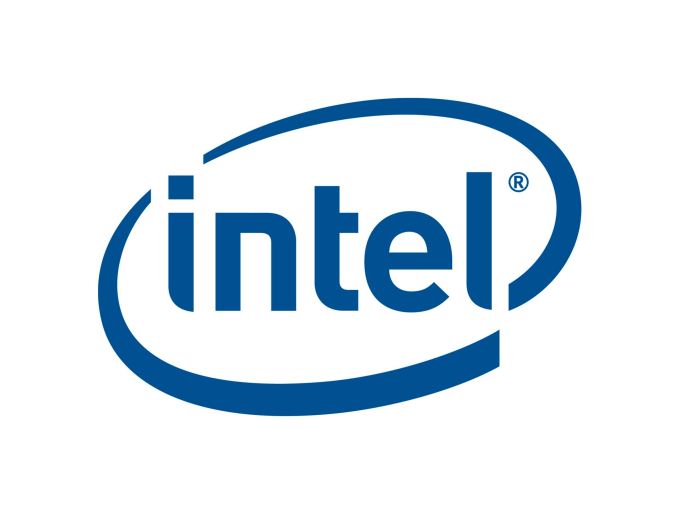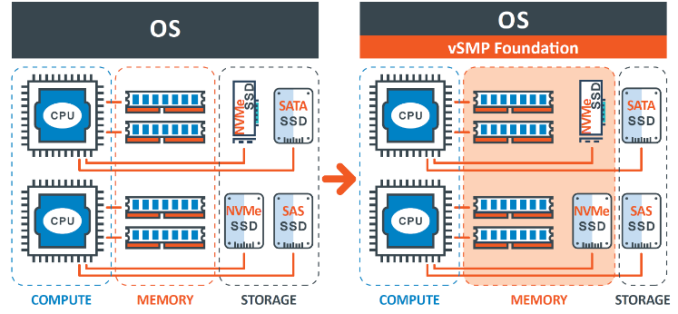Intel Optane And 3D XPoint Updates From IDF
by Billy Tallis on August 16, 2016 2:00 PM EST
At Intel Developer Forum this week in San Francisco, Intel is sharing a few more details about its plans for their Optane SSDs using 3D XPoint memory.
The next milestone in 3D XPoint's journey to being a real product will be a cloud-based testbed for Optane SSDs. Intel will be giving enterprise customers free remote access to systems equipped with Optane SSDs so that they can benchmark how their software runs with 3D Xpoint-based storage and optimize it to take better advantage of the faster storage. By offering cloud-based access before even sampling Optane SSDs, Intel can keep 3D XPoint out of the hands of their competitors longer and perhaps make better use of limited supply while still enabling the software ecosystem to begin preparing for the revolution Intel is planning. However, this won't do much for customers who want to integrate and validate Optane SSDs with their existing hardware platforms and deployments.
The cloud-based Optane testbed will be available by the end of the year, suggesting that we might not be seeing any Optane SSDs in the wild this year. But at the same time, the testbed would only be worth providing if its performance characteristics are going to be pretty close to that of the final Optane SSD products. Having announced the Optane testbed like this, Intel will probably be encouraging their partners to share their performance findings with the public, so we should at least get some semi-independent testing results in a few months time.
In the meantime, Intel and ScaleMP will be demonstrating a use that Optane SSDs will be particularly well-suited for. ScaleMP's vSMP Foundation software family provides virtualization solutions for high performance computing applications. One of their specialities is providing VMs with far more virtual memory than the host system has DRAM, by transparently using NVMe SSDs—or even the DRAM and NVMe storage of other systems connected via Infiniband—to cache what doesn't fit in local DRAM. The latency advantages of 3D XPoint will make Optane SSDs far better swap devices than any flash-based SSDs, and the benefits should still be apparent even when some of that 3D XPoint memory is at the far end of an Infiniband link.
ScaleMP and Intel have previously demonstrated that flash-based NVMe SSDs can be used as a cost-effective alternative to building a server with extreme amounts of DRAM, and with a performance penalty that can be acceptably small. With Optane SSDs that performance penalty should be significantly smaller, widening the range of applications that can make use of this strategy.
Intel will also be demonstrating Optane SSDs used to provide read caching for cloud application or database servers running on Open Compute hardware platforms.











36 Comments
View All Comments
ImSpartacus - Tuesday, August 16, 2016 - link
This is kinda hardcore. Intel must really believe they have some special sauce. I look forward to learning more.bartendalot - Tuesday, August 16, 2016 - link
Intel believes it is a disruptive technology that will eliminate the need for DRAM.That's some special sauce there...
Guspaz - Tuesday, August 16, 2016 - link
Huh? XPoint is still an order of magnitude slower than DRAM, and has 8 orders of magnitude less endurance, nothing in here leads me to believe they intend to replace DRAM. Supplement DRAM by turning primary memory into a two-tier system, on the other hand...Vlad_Da_Great - Tuesday, August 16, 2016 - link
@Guspaz. Endurance is irrelevant since the devices/hardware can easily achieve 5y or more on regular consumer type of usage. I believe the ROI will basically render the DRAM obsolete on that type of a metric. The speed will be replaced by energy consumption. The DRAM will not be completely avoided, but heavily suppressed. The DIMM's modules will hold only small part DRAM just enough for the OS to keep the essential data on it.Cogman - Tuesday, August 16, 2016 - link
DRAM is not regular consumer usage. DRAM Data changes extremely frequently.The reason these things can be used for swap is because the entire point of swap is to move currently inactive data out of main memory and into the swap. That is limited writing.
If you replace all DRAM with this, then writing will go berserk. Last I checked, SSDs target somewhere around 1000->10000 writes per sector. In regular usage that isn't to big of an issue (this is why SSD controllers work hard to move data around and spread out writes).
In a normal applications, that many writes is pretty much peanuts. DDR can pump around 17GB of data per second.
As a swap, it makes sense. As main memory? No way you would do that.
Vlad_Da_Great - Tuesday, August 16, 2016 - link
@Cogman. That is perfect for main memory on mobile devices, especially for notebooks. First it will combine the main memory RAM+SSD in one PCI-slot device, and second will increase the battery life about 5-10x, accounting NV factor and very low latency. So if the notebook can handle 9h of regular consumer type of work with those type of DIMMS is destined to hold for 2 days.The preliminary results show that current standards as SATA and PCI are too slow to allow the true speed to come to life. In the exceptionally intense I/O environment DRAM has no match, but those cases might be limited as the codes or the OS will improve.
SetiroN - Wednesday, August 17, 2016 - link
Could you please stop talking about things you clearly have absolutely zero clue about?Cogman - Wednesday, August 17, 2016 - link
@SetiroN was that directed at me? If so, what would you say I'm wrong about?SetiroN - Wednesday, August 17, 2016 - link
Of course not. It was a reply to the clueless dude pulling imaginary computing out of his ass.beginner99 - Wednesday, August 17, 2016 - link
I see it makes sense in small mobile devices because one solution for storage and memory will save space but due to price will take years if this ever happens. However I fully disagree about battery life. The most important factor on most mobile devices is the display. We can see that now. 14/16 nmand did battery life dramatically increase vs the "bad" S810? Not really.